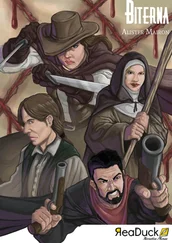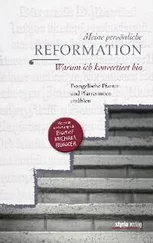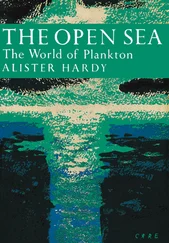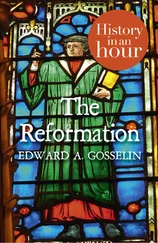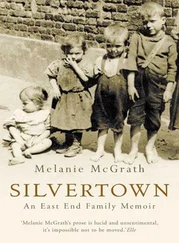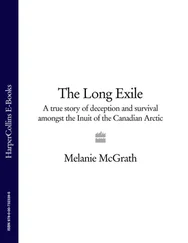1 Bagchi, David V. N., and David C. Steinmetz, eds. The Cambridge Companion to Reformation Theology. Cambridge: Cambridge University Press, 2004.
2 Becker, Sascha O., Steven Pfaff, and Jared Rubin. “Causes and Consequences of the Protestant Reformation.” Explorations in Economic History 62 (2016): 1–25.
3 Bell, Dean Phillip. Sacred Communities: Jewish and Christian Identities in Fifteenth-Century Germany. Leiden: Brill, 2001.
4 Biagioni, Mario. The Radical Reformation and the Making of Modern Europe: A Lasting Heritage. Leiden: Brill, 2017.
5 Boettcher, Susan R. “Post-Colonial Reformation? Hybridity in 16th-Century Christianity.” Social Compass 52, no. 4 (2005): 443–52.
6 Boone, Marc. “Cities in Late Medieval Europe: The Promise and the Curse of Modernity.” Urban History 39, no. 2 (2012): 329–49.
7 Bossy, John. Christianity in the West, 1400–1700. Oxford: Oxford University Press, 1985.
8 Brady, Thomas A. Communities, Politics and Reformation in Early Modern Europe. Leiden: Brill, 1998.
9 Burdett, Amy Nelson. Teaching the Reformation: Ministers and Their Message in Basel, 1529–1629. Oxford: Oxford University Press, 2009.
10 Cantoni, Davide. “Adopting a New Religion: The Case of Protestantism in 16th Century Germany.” Economic Journal 122, no. 560 (2012): 502–31.
11 Cameron, Euan. The European Reformation. Oxford: Oxford University Press, 1991.
12 Dipple, Geoffrey. Antifraternalism and Anticlericalism in the German Reformation: Johann Eberlin von Günzburg and the Campaign against the Friars. Abingdon: Routledge, 2016.
13 Eires, Carlos M. N. Reformations: The Early Modern World, 1450–1650. New Haven, CT: Yale University Press, 2016.
14 François, Wim, and Violet Soen. The Council of Trent: Reform and Controversy in Europe and Beyond (1545–1700). Göttingen: Vandenhoeck & Ruprecht, 2018.
15 Gordon, Bruce. The Swiss Reformation. Manchester: Manchester University Press, 2002.
16 Greengrass, Mark, ed. The Longman Companion to the European Reformation, c. 1500–1618. London: Longman, 1998 .
17 Hamm, Berndt. The Reformation of Faith in the Context of Late Medieval Theology and Piety: Essays. Leiden: Brill, 2004.
18 Hanson, Michele Zelinsky. Religious Identity in an Early Reformation Community: Augsburg, 1517 to 1555. Leiden: Brill, 2009
19 Kelly, James E., and Susan Royal. Early Modern English Catholicism: Identity, Memory and Counter-Reformation. Leiden: Brill, 2017.
20 MacCulloch, Diarmaid. Reformation: Europe’s House Divided, 1490–1700. London: Allen Lane, 2003.
21 MacCulloch, Diarmaid. “Changing Historical Perspectives on the English Reformation: The Last Fifty Years.” Studies in Church History 49 (2013): 282–302.
22 Matheson, Peter. Argula von Grumbach: A Woman before Her Time. Eugene, OR: Cascade Books, 2013.
23 Midelfort, H. C. Erik. “Madness and the Millennium at Münster, 1534–1535,” in Fearful Hope: Approaching the New Millennium, edited by Christopher Keinhenz and Fannie J. LeMoine, 115–34. Madison, WI: University of Wisconsin Press, 1999.
24 Oakley, Francis. The Conciliarist Tradition Constitutionalism in the Catholic Church, 1300–1870. Oxford: Oxford University Press, 2008.
25 Pardue, Brad C. Printing, Power, and Piety: Appeals to the Public during the Early Years of the English Reformation. Leiden: Brill, 2012.
26 Pettegree, Andrew. The Reformation World. London: Routledge, 2001.
27 Racaut, Luc, and Alec Ryrie. Moderate Voices in the European Reformation. London: Routledge, 2017.
28 Roper, Lyndal. Martin Luther: Renegade and Prophet. London: The Bodley Head, 2016.
29 Rublack, Ulinka. Reformation Europe. 2nd ed. Cambridge: Cambridge University Press, 2017.
30 Ryrie, Alec. The Gospel and Henry VIII: Evangelicals in the Early English Reformation. Cambridge: Cambridge University Press, 2003.
31 Ryrie, Alec. The Age of Reformation: The Tudor and Stewart Realms, 1485–1603. London: Routledge, 2017.
32 Selderhuis, Herman J. “Calvinism as Reformed Protestantism: Clarification of a Term,” in Church and School in Early Modern Protestantism, edited by Jordan J. Ballor, David Sytsma, and Jason Zuidema, 723–35. Leiden: Brill, 2013.
33 Snyder, C. Arnold. “The Birth and Evolution of Swiss Anabaptism (1520–1530).” Mennonite Quarterly Review 80 (2006): 501–645.
34 Stark, Rodney. For the Glory of God: How Monotheism Led to Reformations, Science, Witch-Hunts, and the End of Slavery. Princeton, NJ: Princeton University Press, 2003.
35 Stump, Phillip H. The Reforms of the Council of Constance (1414–1418). Leiden: Brill, 1994.
36 Summit, Jennifer, and David Wallace. “Rethinking Periodization.” Journal of Medieval and Early Modern Studies 37, no. 3 (2007): 447–51.
37 Thysell, Carol. The Pleasure of Discernment: Marguerite de Navarre as Theologian. Oxford: Oxford University Press, 2000.
38 Van Engen, John. “Multiple Options: The World of the Fifteenth-Century Church.” Church History 77, no. 2 (2008): 257–84.
39 Visser, Arnoud S. Q. “Reading Augustine through Erasmus’ Eyes: Humanist Scholarship and Paratextual Guidance in the Wake of the Reformation.” Erasmus of Rotterdam Society Yearbook (2008): 67–90.
40 Visser, Arnoud S. Q. Reading Augustine in the Reformation: The Flexibility of Intellectual Authority in Europe, 1500–1620. New York: Oxford University Press, 2011.
41 Wetzel, Richard. “Staupitz Augustinianus: An Account of the Reception of Augustine in the Tübingen Sermons,” in Via Augustini: Augustine in the Later Middle Ages, Renaissance, and Reformation: Essays in Honor of Damasus Trapp, O.S.A, edited by Heiko A. Oberman and Frank A. James, 72–115. Leiden: Brill, 1991.
42 Williman, Daniel. “Schism within the Curia: The Twin Papal Elections of 1378.” Journal of Ecclesiastical History, 59, no. 1 (2008): 29–47.
Part One The Context of the Thought of the Reformation
2 A Changing World The Cultural Backdrop to the Reformation
To understand the origins of the Reformation and its religious and intellectual agendas, it is necessary to reflect on the culture of western Europe in the fifteenth century. Recent scholarship has placed an emphasis upon the need to place the Reformation movement in its historical context and to try to integrate the insights of late medieval, Renaissance, and Reformation studies into a larger vision of this “Age of Reformation.” The separation of these fields – for example, through each having their own university chairs, journals, and learned societies – has done little to help this process of synthesis and consolidation, which is essential if we are to understand both the intellectual context within which the ideas of the Reformation emerged, and the reasons why they proved to have such appeal.
During the fifteenth century, as we noted in the previous chapter, many protest movements emerged, urging reform of the church at multiple levels. Some of these movements – echoing themes from Jan Huss’ fourteenth-century campaign for reform in Bohemia – were entangled with local demands for regional autonomy; others expressed concern at the excessive wealth and social influence of the church. Some are best seen as processes of reform and renewal, initiated by influential figures within the church, such as the reforms introduced in Spain during 1480s by Francisco Ximénez de Cisneros, which laid the foundations for the church playing a major role in the Spanish “Golden Age” of the sixteenth and early seventeenth centuries.
Yet it is important to look beyond these demands for reform and consider some deeper changes in outlooks and expectations on the eve of the Reformation in western Europe, which help us understand the emergence of reforming movements, the agendas they pursued, and their popular appeal. The present chapter offers a sketch-map of some relevant aspects of late medieval European culture which will help contextualize the developments of the sixteenth century. The two chapters which follow examine in some detail the two most important intellectual forces in late medieval Europe: Renaissance humanism and scholastic theology.
Читать дальше
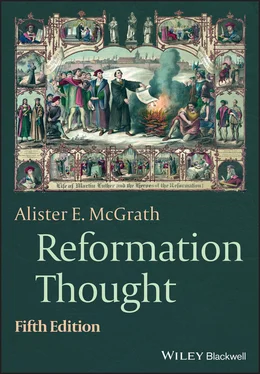
![О Генри - Возрождение Каллиопы [The Reformation of Calliope]](/books/407342/o-genri-vozrozhdenie-kalliopy-the-reformation-of-c-thumb.webp)
